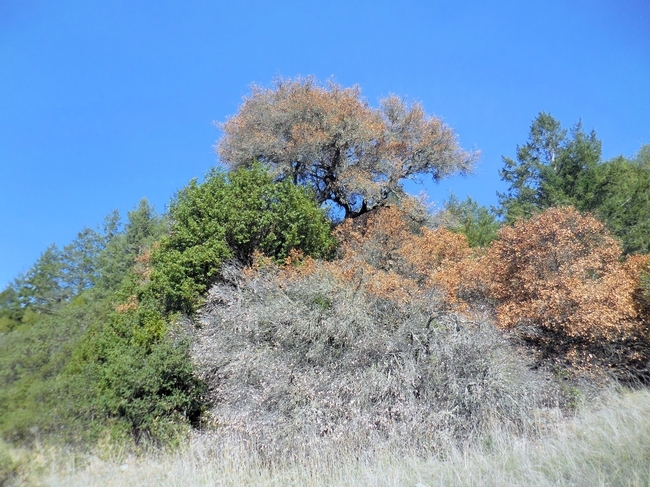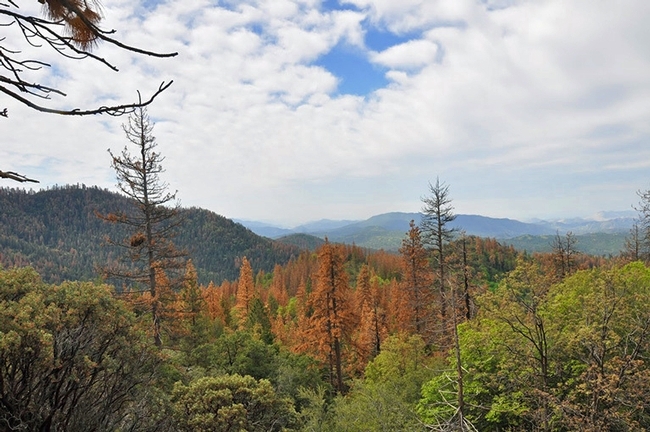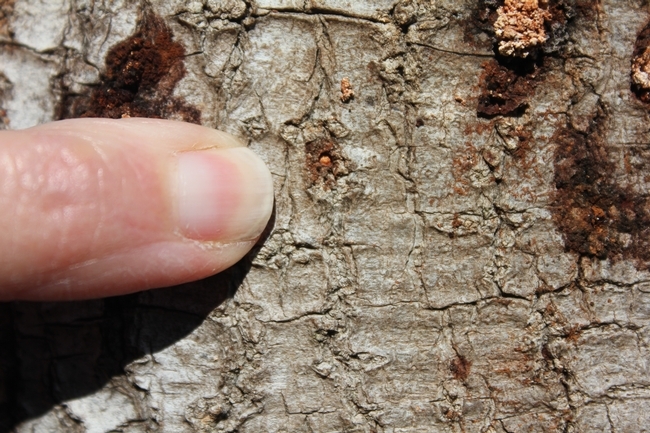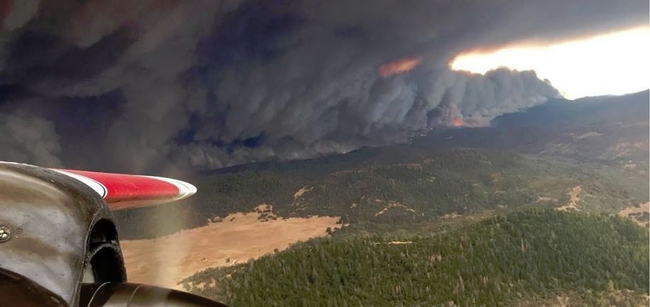Trees in several parts of California are suffering greatly in recent years due to pests, fire, drought and now heavy rain. UC Cooperative Extension is working with landowners and communities to protect the state's natural environments, including its beloved trees.
UCCE plant pathology specialist Matteo Garbelotto said the wet 2016-17 winter is bad news for oak trees in North Coast areas because it has created conditions that support the spread of Sudden Oak Death, reported Bay Nature. He is recruiting volunteers for 15 “bioblitzes” in April and May to track the spread of the disease. See more on the Garbelotto website.
UCCE forestry and natural resources advisor Susie Kocher held a workshop in Sonora for owners of forestland in the Sierra Nevada, where the epic 2010-16 drought killed millions of trees. Sally Shilling of Capital Public Radio attended and reported on the meeting. "There's just a lot of changes that need to be made to get to a resilient forest and hopefully this situation will help people notice that we have a crisis and that we can move forward and make some changes in how we do business," Kocher said. The federal government and CalFire have programs that can help landowners remove dead trees and replant.
In Southern California, the polyphagous shot hole borer could kill as many as 27 million trees in Los Angeles, Orange, Riverside and San Bernardino counties, including parts of the desert, reported Louis Shagun in the Los Angeles Times. Mark Hoddle, UC Cooperative Extension biocontrol specialist, said that the tree loss is starting to cascade across the urban landscape. “Without shade trees, water temperatures will rise and algae will bloom in riparian areas, for instance,” Hoddle said. “As a result, fish, frog and native insect populations will diminish, along with the pleasure of hiking, because there'll be nothing to look at but dead boughs of trees.”
In Lake County, UC Cooperative Extension director Gregory Giusti gathered with 400 members of the community to replant trees in a park that was left treeless by the devastating Valley Fire of 2015, reported Elizabeth Larson in Lake County News. While a lot of people lost their houses, “It was the trees that made it their home. People wanted to live in the forest. They wanted to live among the trees. So this is a way to rebuild their home, to get back what was lost,” Giusti said.



